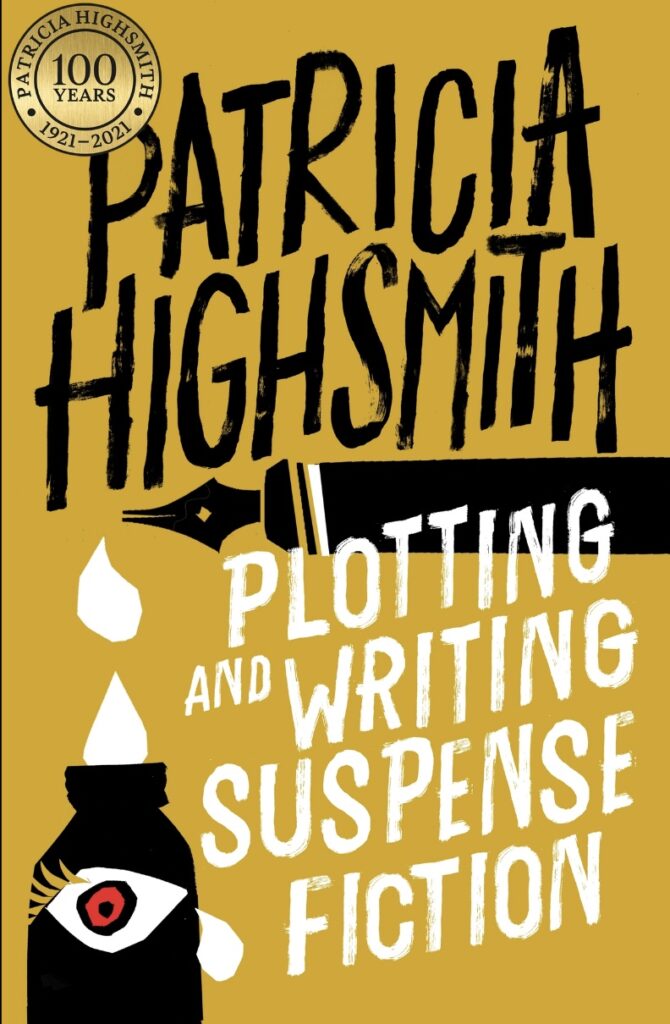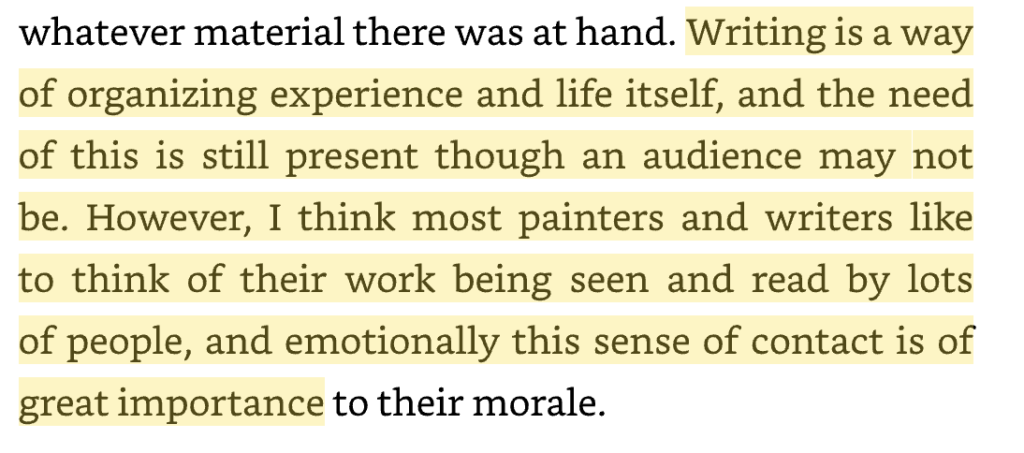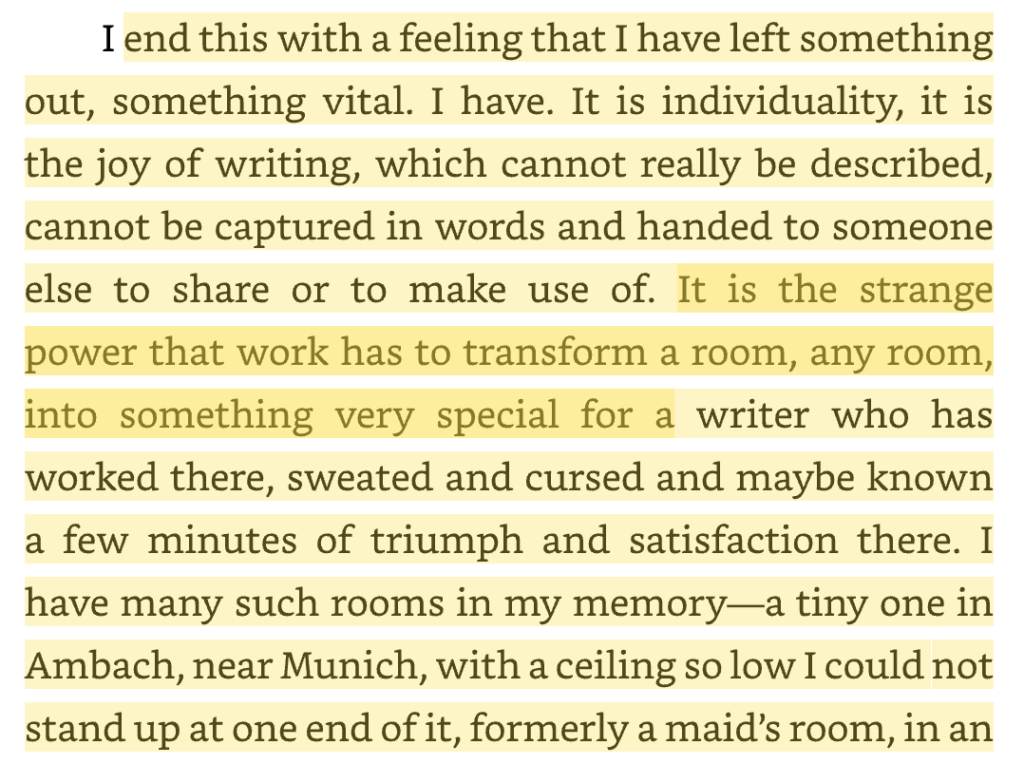
I recently read Patricia Highsmith’s book on Plotting and Writing Suspense Fiction. It’s a short book of about 120 pages, first published 40 years ago in 1983. Patricia Highsmith is probably best known to modern readers for her Ripley series, specifically The Talented Mr Ripley and Strangers on a Train (both of which have been made into well-known movies).
This book is for serious writers, but not necessarily only for those writing suspense fiction. Most of the points Highsmith makes in her book struck a chord with me, however, the points I’m mentioning below are things I believe I have to improve on. There’s a lot more in the book, and I suggest writers to purchase the book and go through it themselves.
Ideation When Writing Fiction
- Jot down notes in a small notebook
- 3-4 words that can evoke a thought or mood
- When you have no ideas, browse through the notebooks
- Combine two ideas to create stories
- Once you have an idea, give it a break and let the story develop subconsciously. You’ll soon be ready to write a story.
- Ideas must be fleshed with characters, the setting, the atmosphere. You must know about their backgrounds even though it may not always go in the book.
Conviction and Fiction
- Have the feeling and conviction that more ideas will come from the same place the first idea came
- More strength will come from the same place where your first strength came
- “You are inexhaustible as long as you’re alive.”
Record of Emotional Experience
- In suspense novels (and in all other forms of fiction) while the plot may be calculated, the scenes and descriptions will be based on the writer’s own experiences
- First-hand and real experiences will bring the book alive
Plotting For Suspense Fiction (Also applicable to all kinds of fiction)
- The incomplete plot — The story must be alive while the writer is writing it. It, sometimes, need not even be complete because it should be still entertaining the writer
- Start with a chapter outline to save yourself time and prevent rambling
- Always think, “How will this chapter advance the story?”
- The first third of the book works, atmosphere, character, setting, etc. The last quarter appears foggy, and it is usually hard to solve the problems there till you get there.
- “Feel a story” before you write
The Likeable Villainous Hero
- When writing suspense novels, sometimes the hero is the villain, psychopathic or neurotic. Then how do you make them likeable?
- Give them as many pleasant qualities as possible — generosity, kindness to some people, fondness for the arts, etc. Can be a contrast to his criminality.
How to choose the correct point of view for your story?
- May take you 20 pages to realise the POV is not right. Change it.
- First person singular most difficult and restrictive
- Easiest is the third-person singular, from the POV of the main character
- Two POV makes it quite interesting — both to read and to write.
- Single POV makes it more intense.
Using your sense for building atmosphere
- Use all five or six senses. Smell, colour, sound, sixth sense.
The First Draft & Action
- The first line. Should be something that moves and gives action.
- First chapter — Should include lines of action. Even if that means potential action.
- There is action or the promise of action in every good novel. In suspense stories, the action is apt to be the more violent kind. That’s the only difference.
- Tendency to over-describe, over-explain. Don’t describe everything in a room, but use a few words to depict a room as rich, poor, neat, careless, fussy, masculine or feminine.
- Be able to see one chapter ahead of what you’re writing to keep progressing
The Snags
- Usually in the second half of the book. One feels trapped.
- Ask yourself, “What do you want to happen?” Why did you write this book?
- What effect do you want? Tragedy, comedy, melancholy, or whatever. Be aware of the effect before you start writing.
- If something feels off towards the end of the story, the groundwork for that character probably doesn’t exist. You need to lay the seeds of future action in the past.
The Second Draft
- Read through the full story as a reader, without stopping
- See large gaps — emotional, plot.
- Jot down notes — awkward writing, section too brief, point not emphasised enough, boring.
- Strike out unnecessary sentences
- Clarity is most important. Unclear sentences should be clarified.
- Cut one or two sentences at the end of chapters easily. Even though you may have strained to produce them.
- Try to cut while keeping in mind the target word count. 60,000 to 80,000 words (240 to 320 pages).
- Cutting is painful and difficult, and more will come and it will be more and more difficult.
A sense of contact

A sense of joy when writing

- The physical room you write in will become a place of fond memories. Can transport you back to those joyous moments of writing.
- I felt this with The War Diary. I did a lot of my writing and editing in Delhi during COVID. My grandmother’s old room with musty curtains and the smell of wood. Birds twittering, children causing havoc somewhere, but those moments of solitude and joy with only the words for company.
Review of Patricia Highsmith’s Plotting and Writing Suspense Fiction
I would recommend this book to more experienced writers, who are specifically looking to write longer works of fiction. While Highsmith gives a lot of advice to short story writers, I feel Highsmith’s experiences noted here are more suited to those looking to write long-form fiction. This could be suspense (which is probably the thriller genre of today), or any other genre. The anecdotes mentioned here are very personal and based on Highsmith’s long and productive career in producing outstanding works of fiction, so will definitely strike a chord with any budding writer.
Leave a Reply